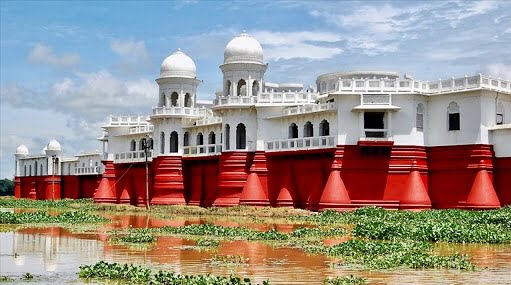No products in the cart.
The Unfolding of Nature’s Daughter
Tripura
Steeped in heritage and natural beauty, is the perfect travel destination for nature and culture buffs, and seekers of solitude
The Northeastern state of Tripura has converted its relative isolation into an advantage by preserving its centuries-old customs and traditions. This ancient kingdom is also renowned for its natural heritage, which has also gained enormously from this isolation, making its unpolluted environs a copybook inspiration for conservation practices.
Located in the southwest extreme corner of the Northeast, Tripura is surrounded by the delta lands of Bangladesh on three sides, and the remaining land adjoins the Cachar district of Assam and Mizoram. Tripura serves as a fabulous alternative destination for nature-culture buffs, poets, writers, and seekers of solitude.
Tripura’s antecedents are woven into a dense web of myth, history, and conjecture. It appears that the name of the state is derived from a king from the olden days who went by the name of ‘Tripur’ who held the territorial domain known as ‘Tripura’ as revealed by Tripura’s celebrated court chronicle, the ‘Rajmala.’ Controversy still rules regarding the provenance of its name, with scholars coming up with various theories.
Straddling the tri-junction of the Tripura-Mizoram and Chittangong Hill Track (CHT) of the Bangladesh border, Tripura’s deep-seated beauty is broken by the serried ranks of low ranges running northwest to southeast. The highest elevation is about 3,000ft and its primary rivers are the Khowai, Manu, and Gomti. Very aptly recognized as the “Daughter of Nature’ Tripura’s gorgeous environs have been highly inspirational for poets and writers, filmmakers, and musicians. Hindi cinema’s music legends, Sachin Dev Barman and Rahul Dev Barman hailed from Tripura and no less a personality than neighbouring Bengal’s Poet Laureate, Rabindranath Tagore is said to have penned some of his seminal works here.
As ascertained by the 2011 census Tripura’s populace comprises 19 indigenous tribal communities; 69.95% of the inhabitants of the state are non-tribals, largely made up of Bengalis. The Tripuri or Debbarman community, is the largest while the Reangs, who came in from the Chittagong hill-tracts of Bangladesh with a distinctive language and culture, are the second largest amongst the tribes living in the state. It is also home to pockets of tribesmen from the Jamatia, Noatia, Darlong, Hala, Garos, Chakmas and Kalai communities.
Tripura’s shining mosaic of history, myth, tribal culture, and folklore traditions is the springboard for a range of exciting adventures to be explored against the backdrop of its enchanting vistas. Travellers can now avail of packaged itineraries or seek operators who offer customised tours of the region. The cavalcade of attractions on offer includes historic palaces, rock cut carvings, stone sculptures, Buddhist and Hindu holy places, wildlife sanctuaries, archaeological sites developed to be more tourist-friendly such as Pilak and Unakoti which is described as the ‘Angkor Wat of the North East’, and a wide range of ancestral arts and crafts. The Jampui Hills, a huge magnet for nature buffs, is the setting of the annual Orange Festival, which opens up a window to Tripura’s multi-fold cultural delights. In a recent move, plans are underway to develop vehicle-free ‘weekend tourism’ with cultural programmes around Tripura’s legendary 19th-century Ujjayanta Palace in Agartala which also houses the state museum. Plans are afoot to step up development of the eco-tourism attractions of the state.
Steps are in place to airlink the state capital Agartala with neighbouring countries such as Bangladesh, Thailand, and a few others. Air connectivity is to be further enhanced with a new airport and eight new heliports are to be set up in Matabari, Amarpur, Narikel Kunj in Gomati district, Raipassa in Dhalai district, Maicherra in South District, Khantiang, Kawnpui, and in Jampui in North district. Flight services from Kailashahar, in the Unakoti district will also be introduced. Tripura is linked to the rest of India by NH-44 which snakes through Assam, Meghalaya, North Bengal, Kolkata .
















